Students and staff begin each day with 20 minutes of Tai Chi. Eric creates videos so that we can practice on our own outside of the live class and posts them on Google Classroom. Here are just a few. I love it! Please join us!!!
And they're off!
Making sure everyone has the supplies they need to learn from home. The LDFDS elves visit each student’s family…properly masked and socially distanced of course!
And, what would school be like without rubber balls? Or, without someone willing to inflate them for us!
Student Profiles
Welcome back!!!
We’ve finally begun to update our website and have added a section for updating COVID-19 related information. Please take a look and provide us with suggestions and feedback if you wish.
I would like to experiment with creating a section profiling individual students over the course of the year centered on their experience during this most unusual of times. It would be an opportunity to share varying personal experiences as many of us learn from home through sharing writing, artwork, photographs, reflections and opinions. We would select what we believe is most appropriate and relevant from each student’s submission to display on the website. Creativity is encouraged! And, we’d like to see every student profiled. A simple word, photograph, or drawing would suffice.
It represents one way of connecting when in-person contact may be decreased. We have many ideas and welcome yours. I would also like to see a virtual online blackboard where students could communicate and create communally. With all of us working together, we have the opportunity to use our ingenuity to find new and meaningful ways to learn and stay connected.
Dominique
Emil Nolde 1867 - 1956
Life outside the schoolbox
Slowing down, paying attention, noticing what is around us... stopping to “sit and smell the roses” … to think, to reflect, to feel…is not what school, as it mirrors our frenetic world, is about these days–and we all pay the price. This hyperactive pace negatively impacts our physical and emotional well-being. This school year, we are introducing an observation period to our daily schedule–a time for students to experience a little piece of the world that they have chosen and to reflect… through words, drawings, photographs how they are affected by the changes they observe in themselves and their private chosen space as each new day and season transforms it.
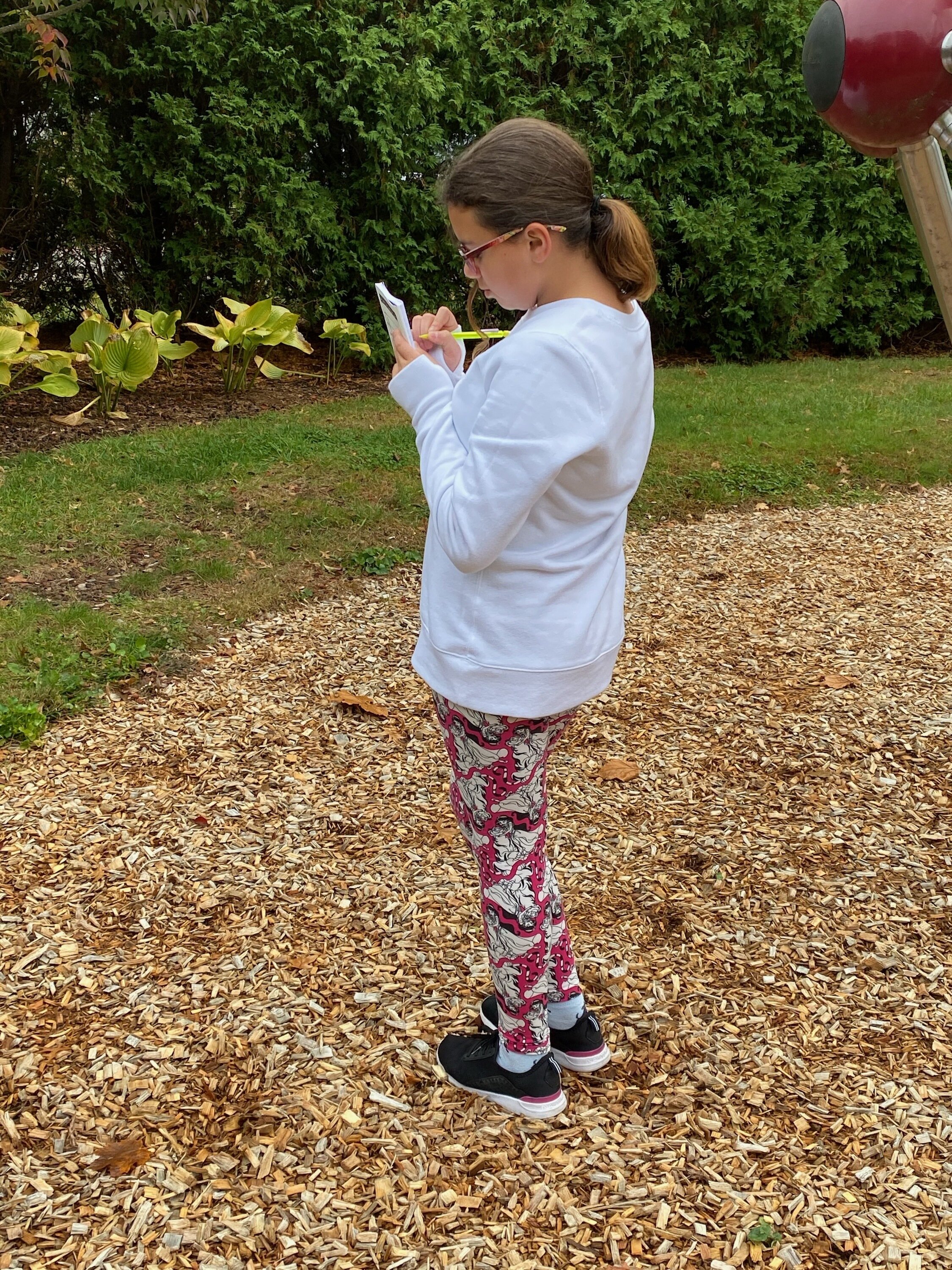
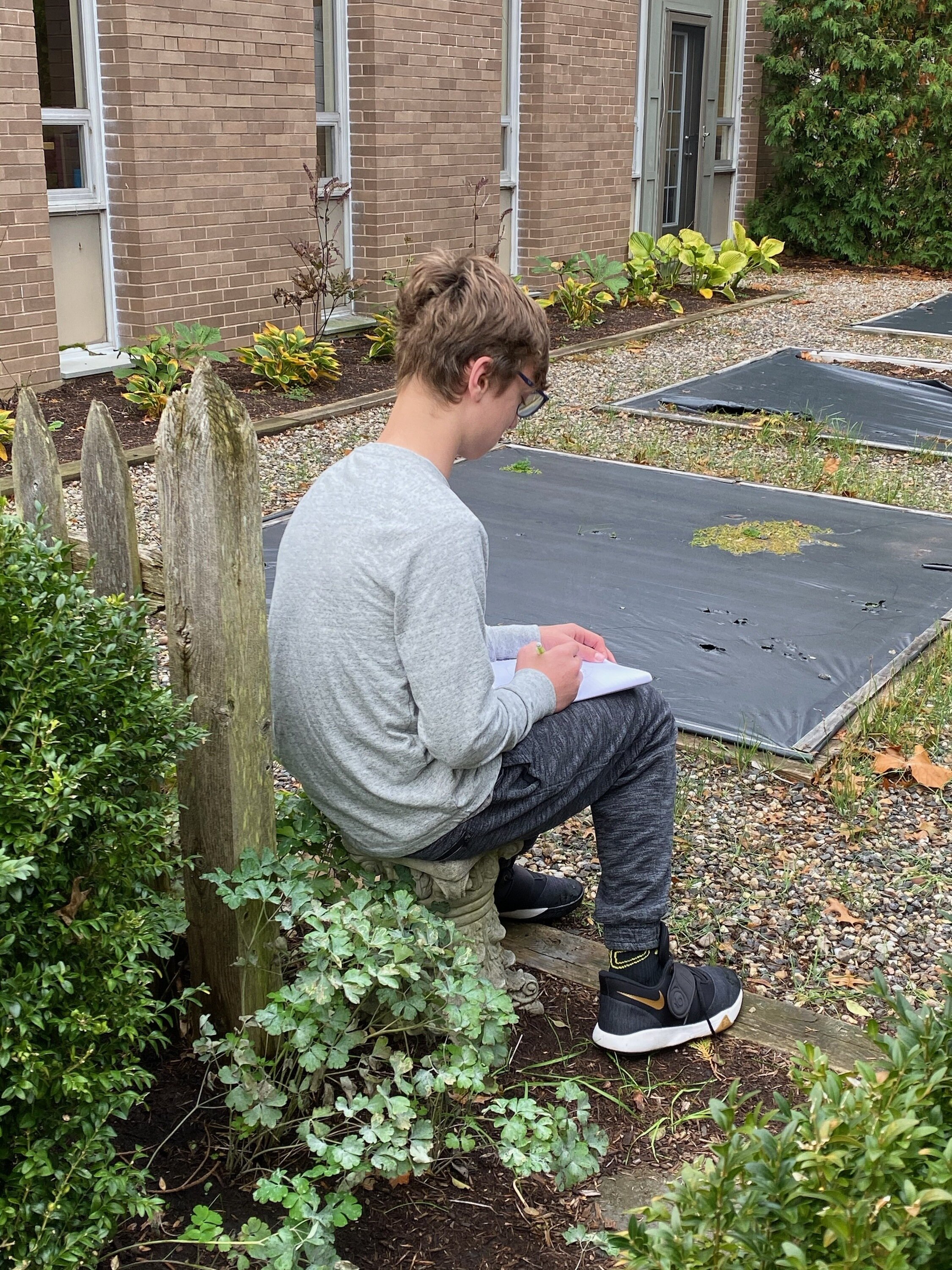
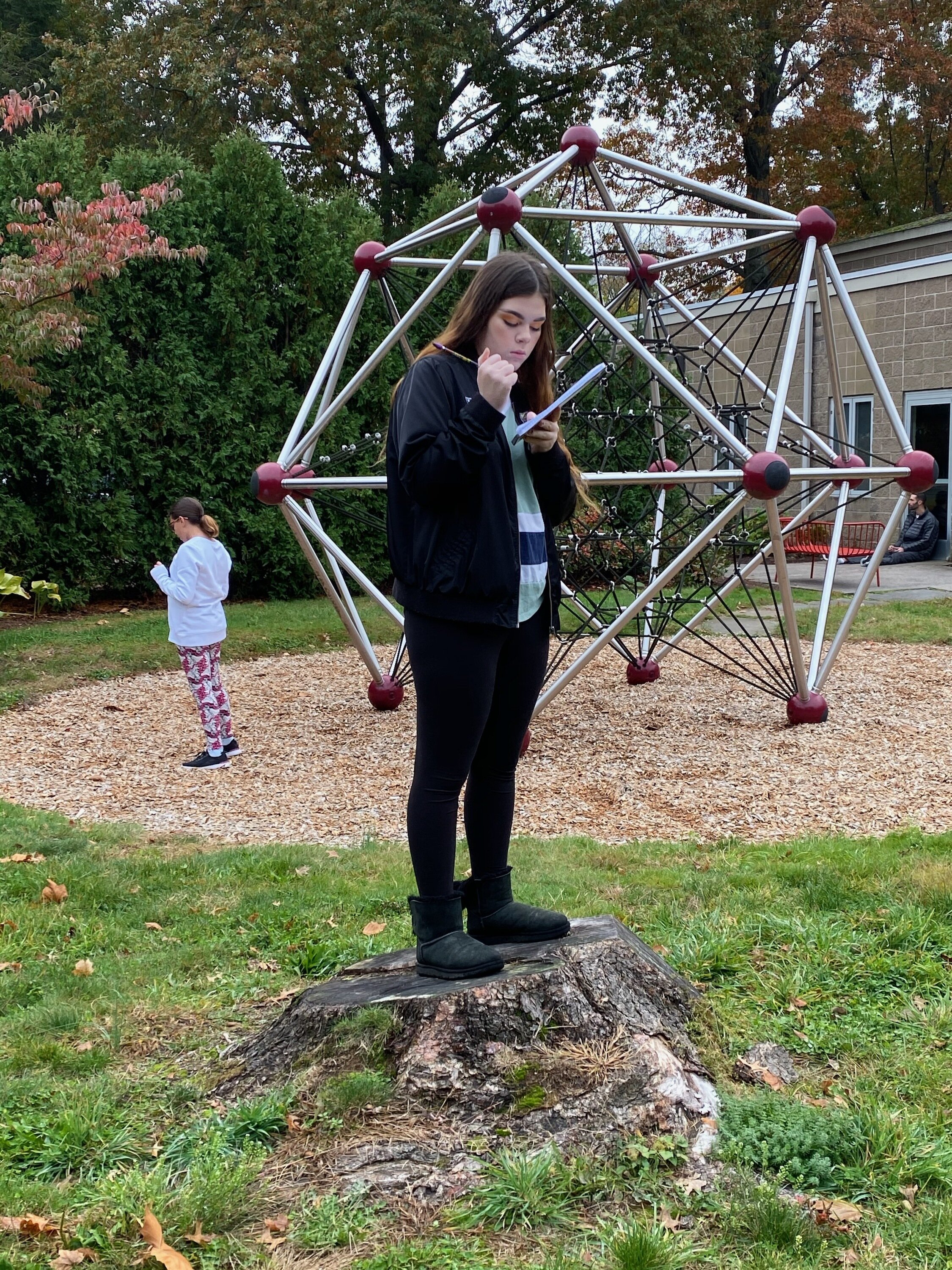
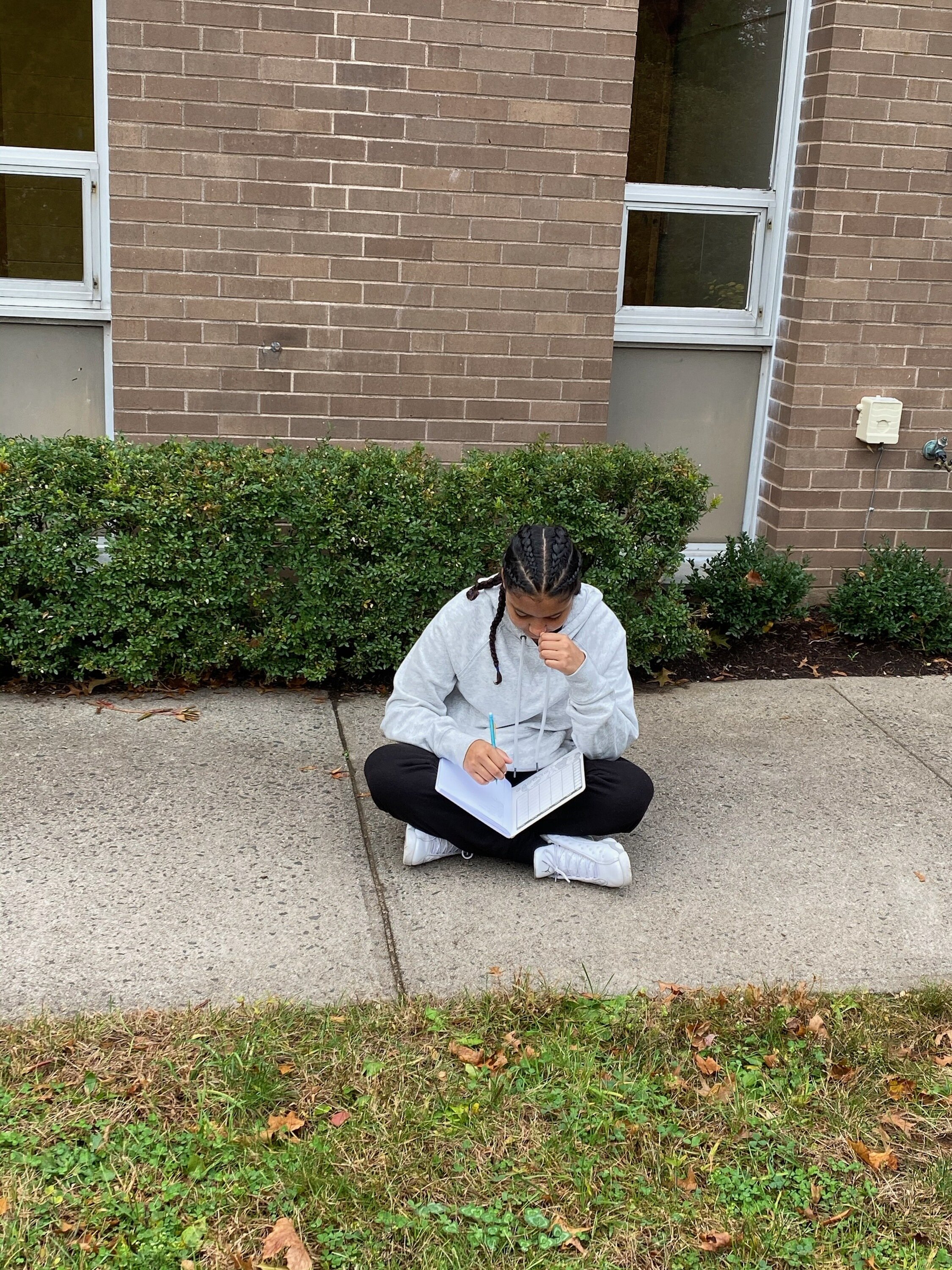
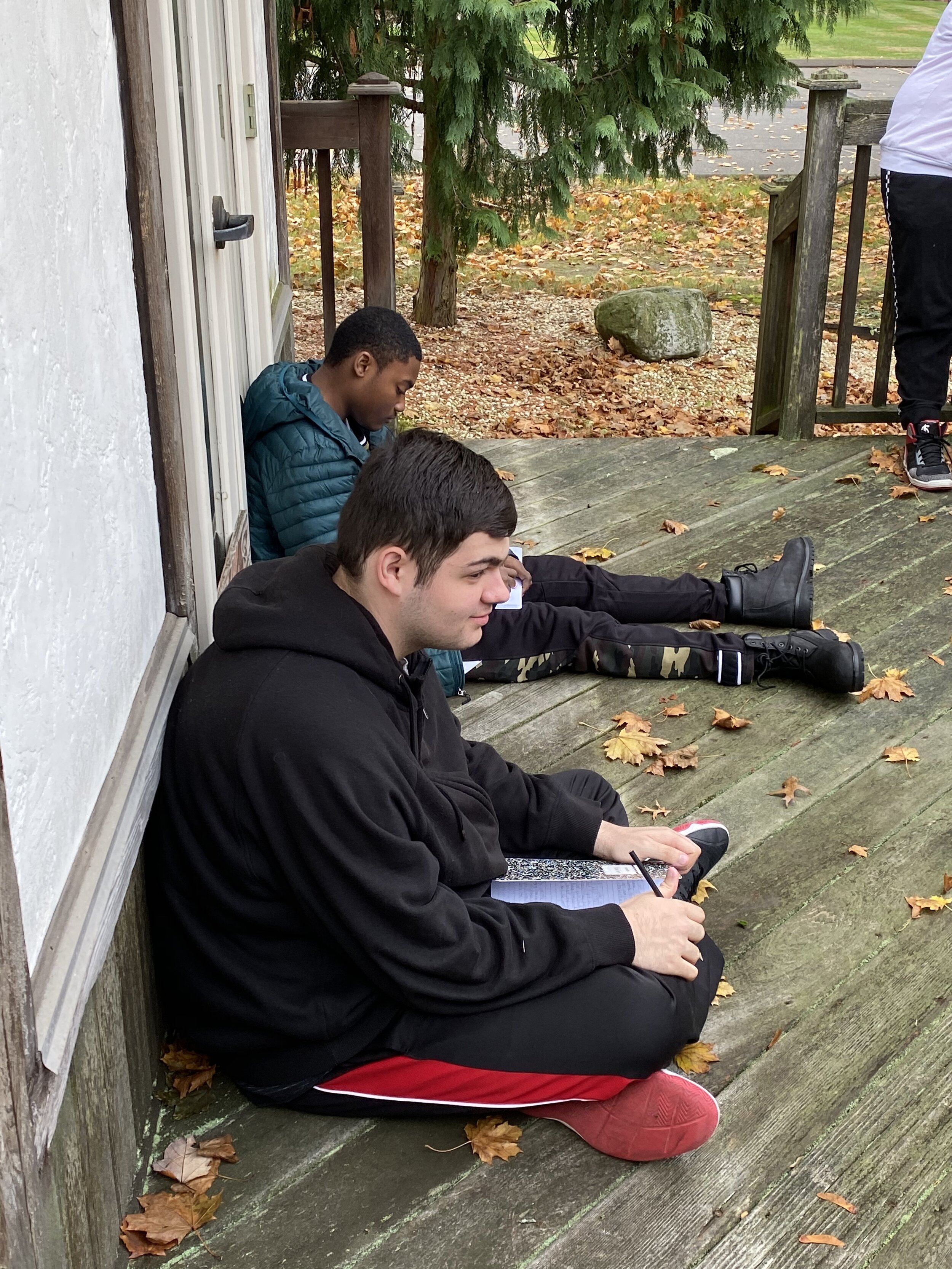
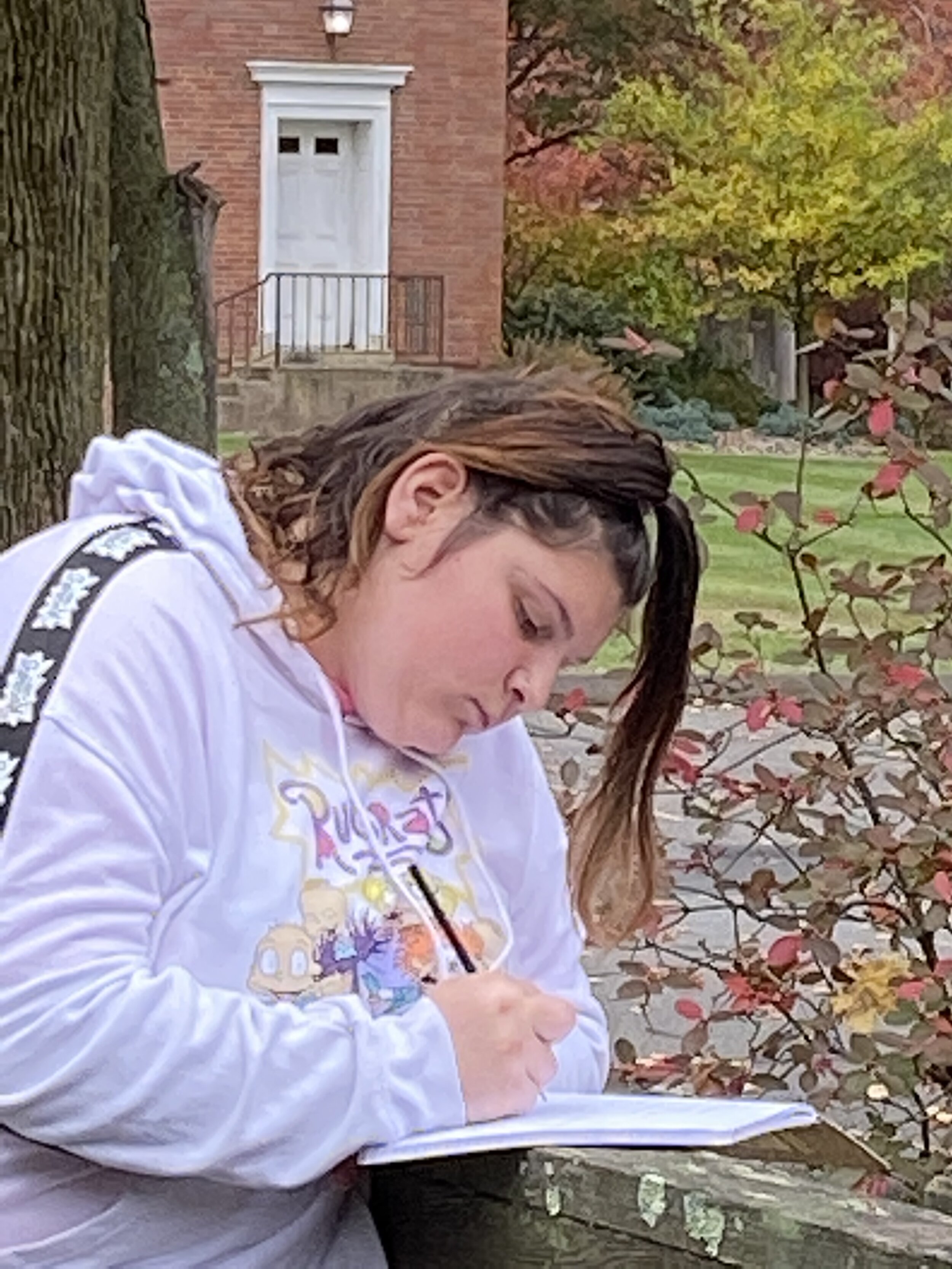
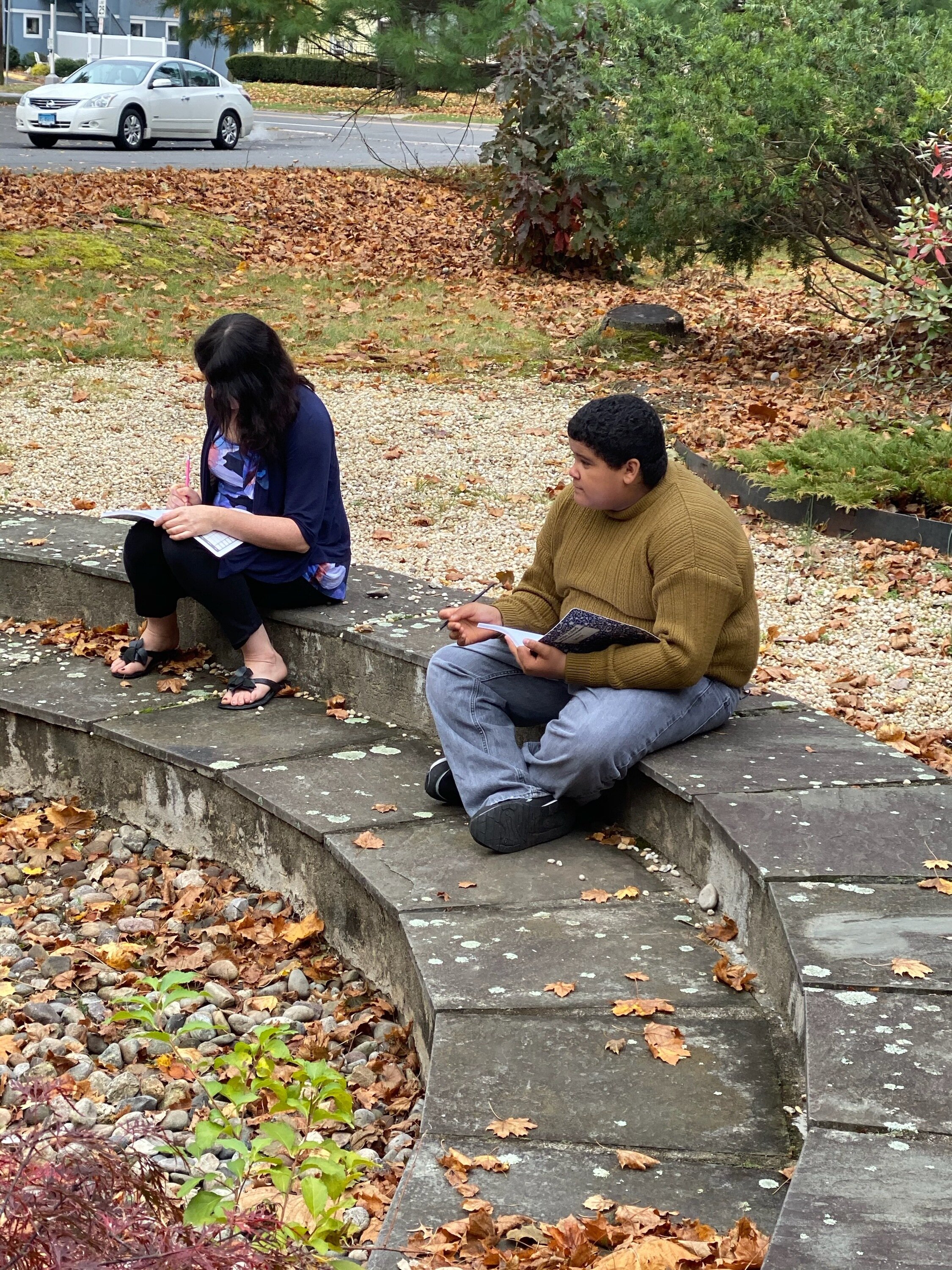
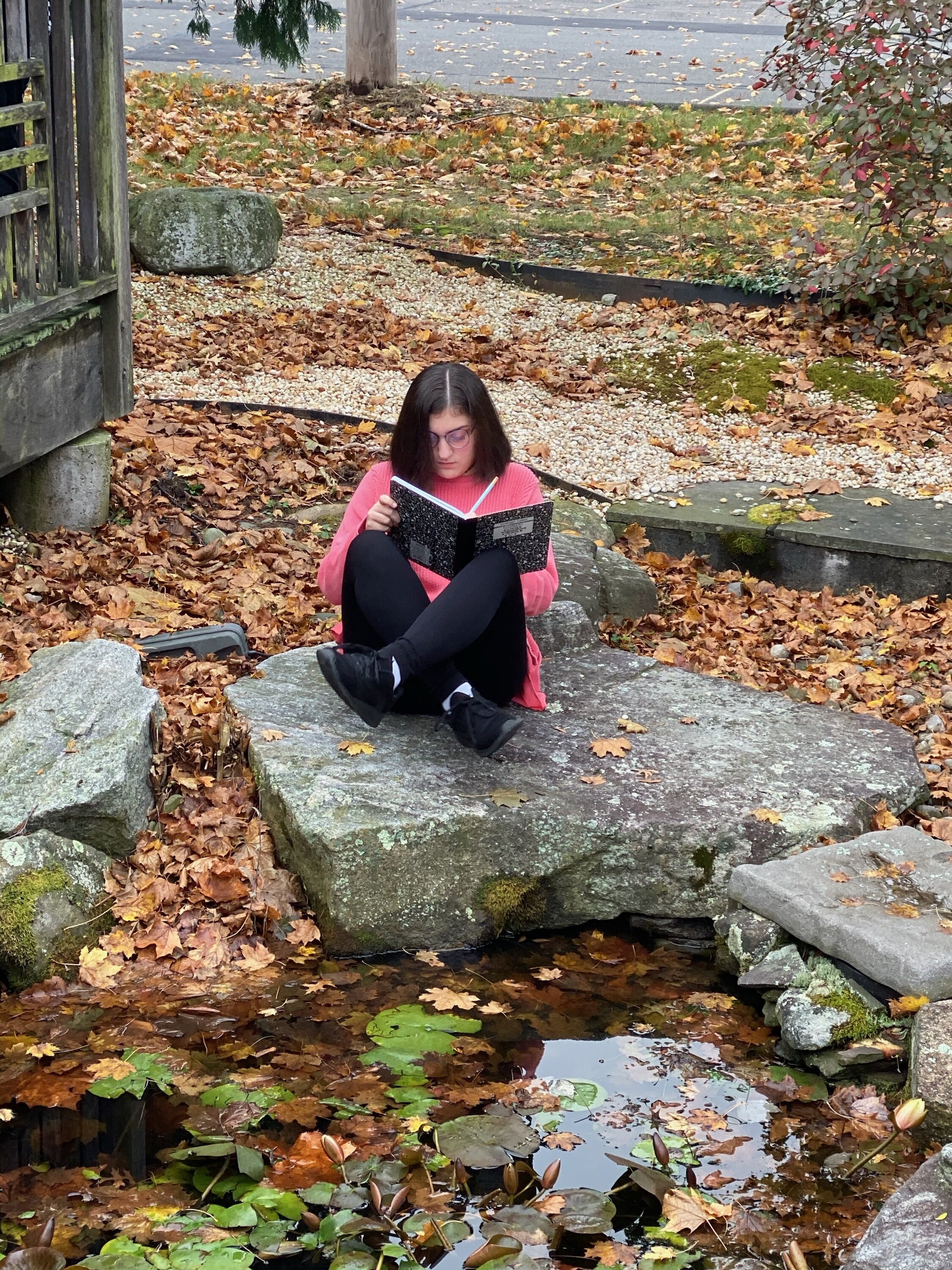
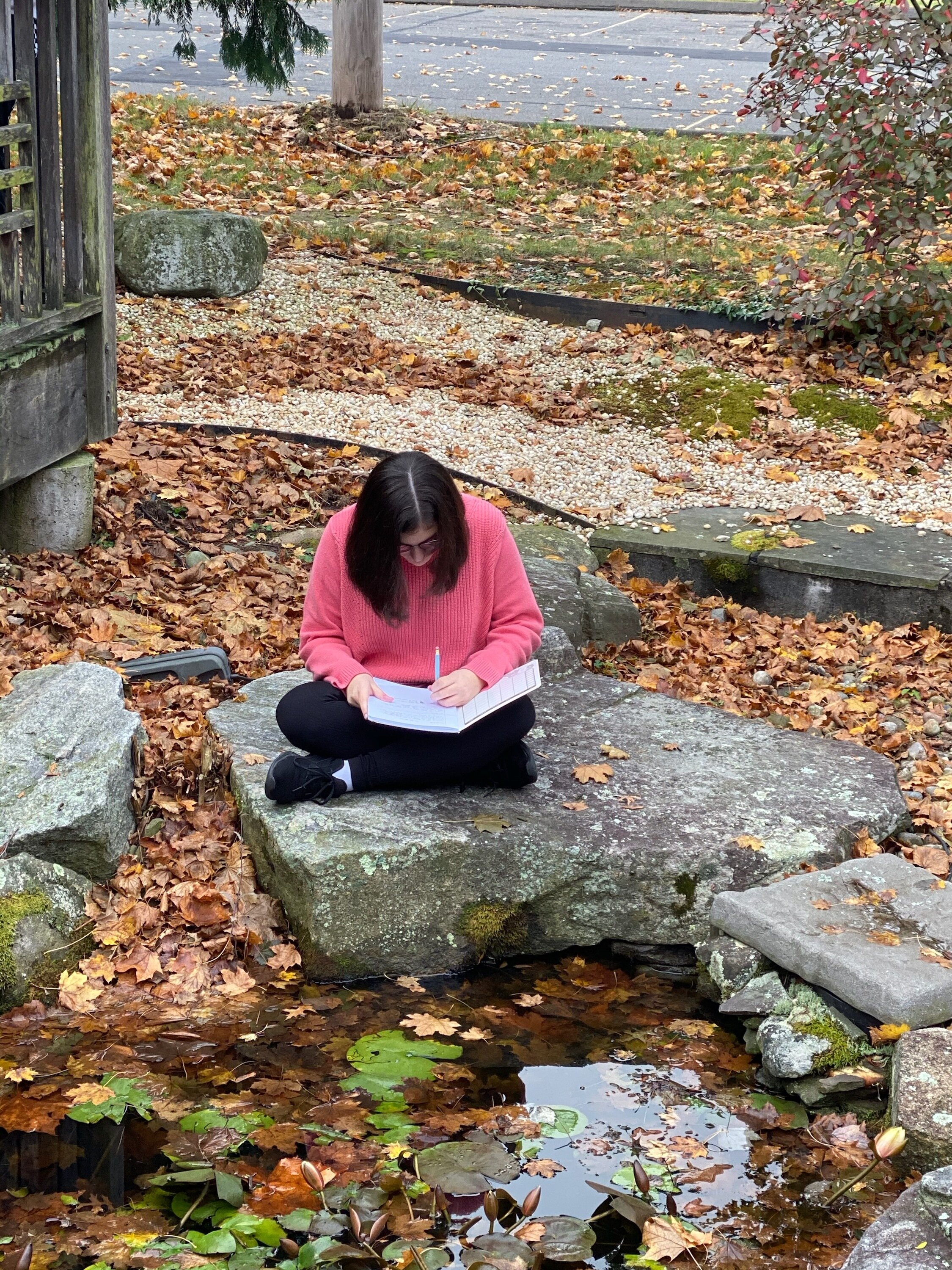
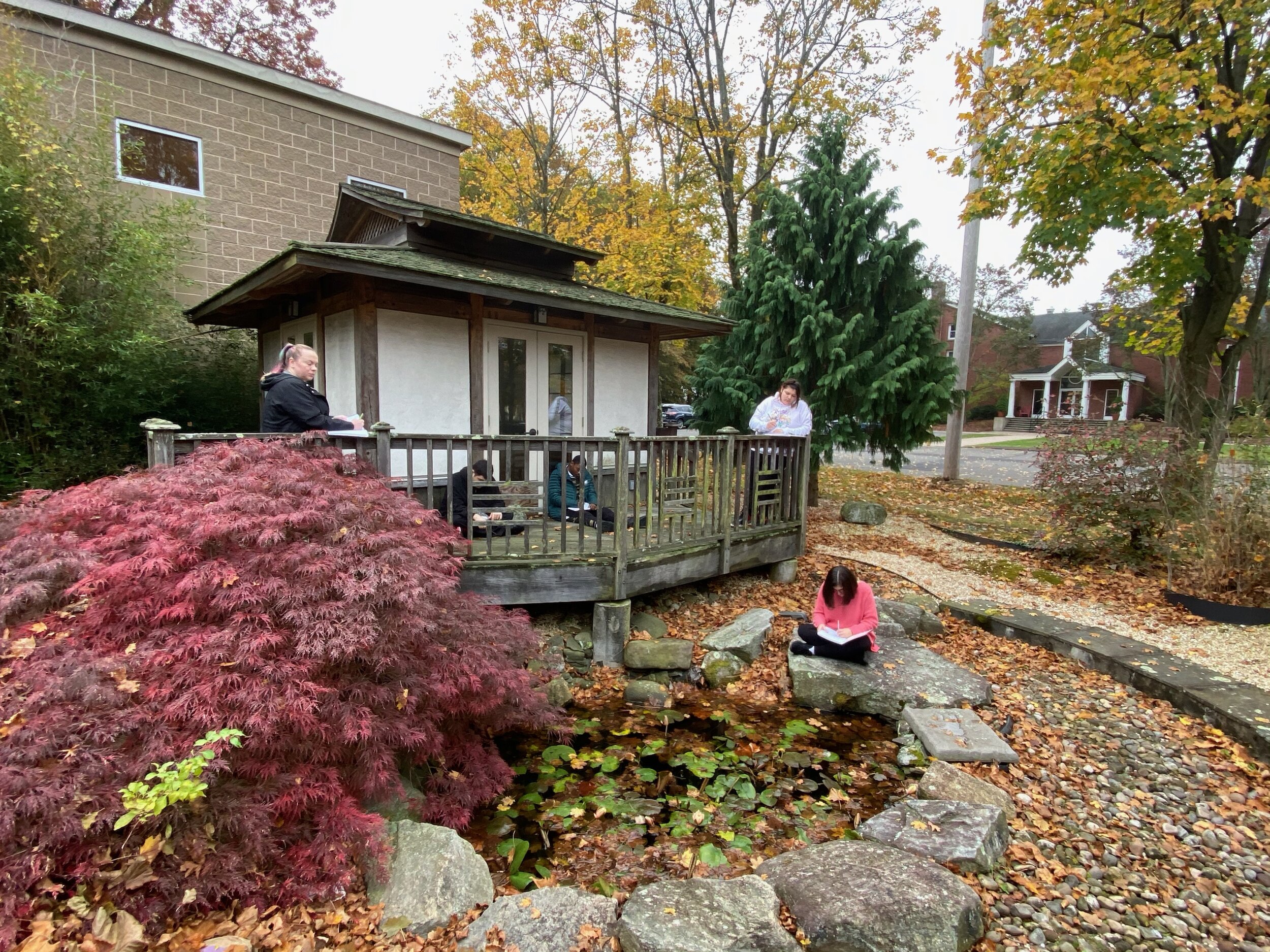
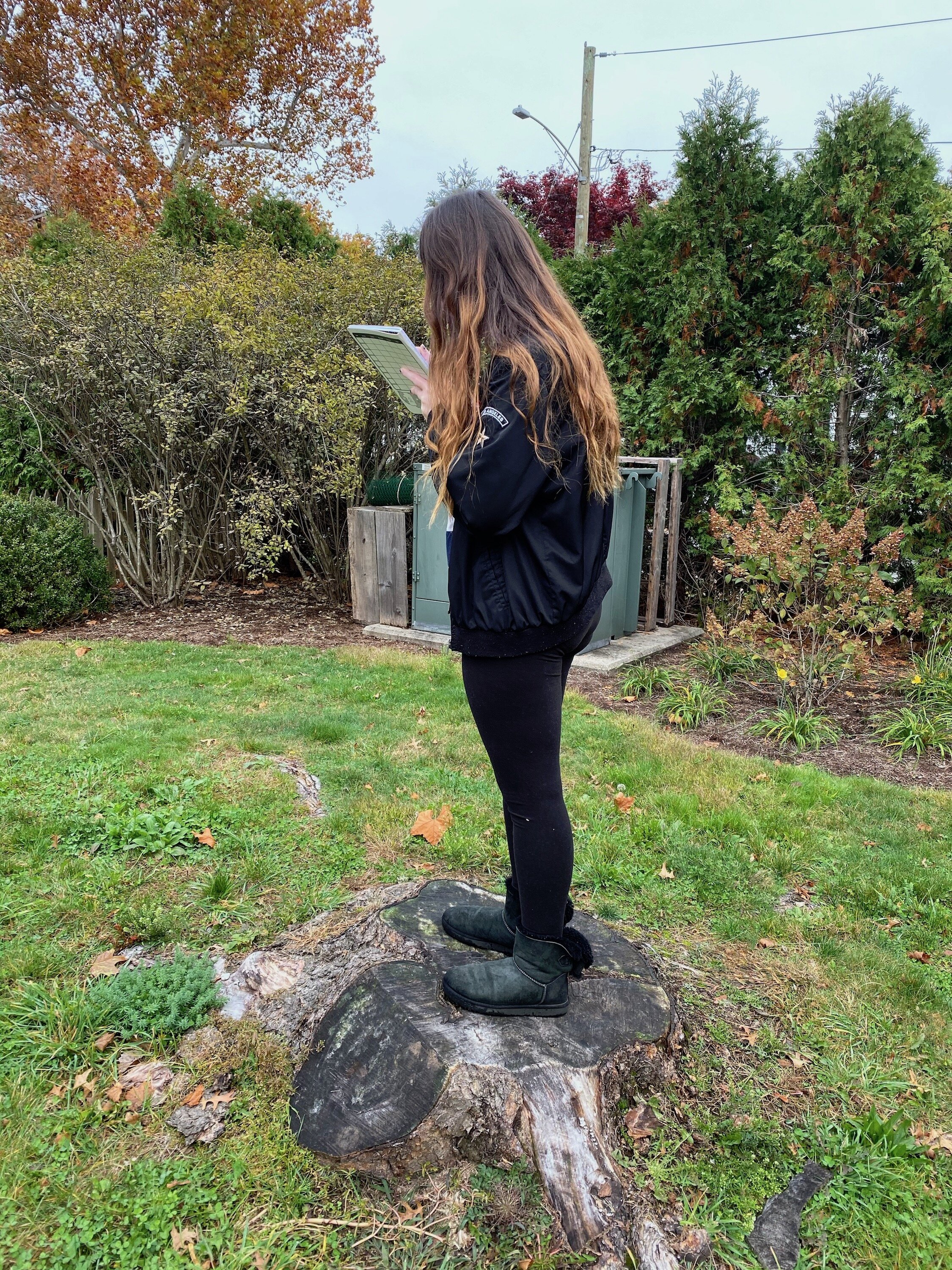
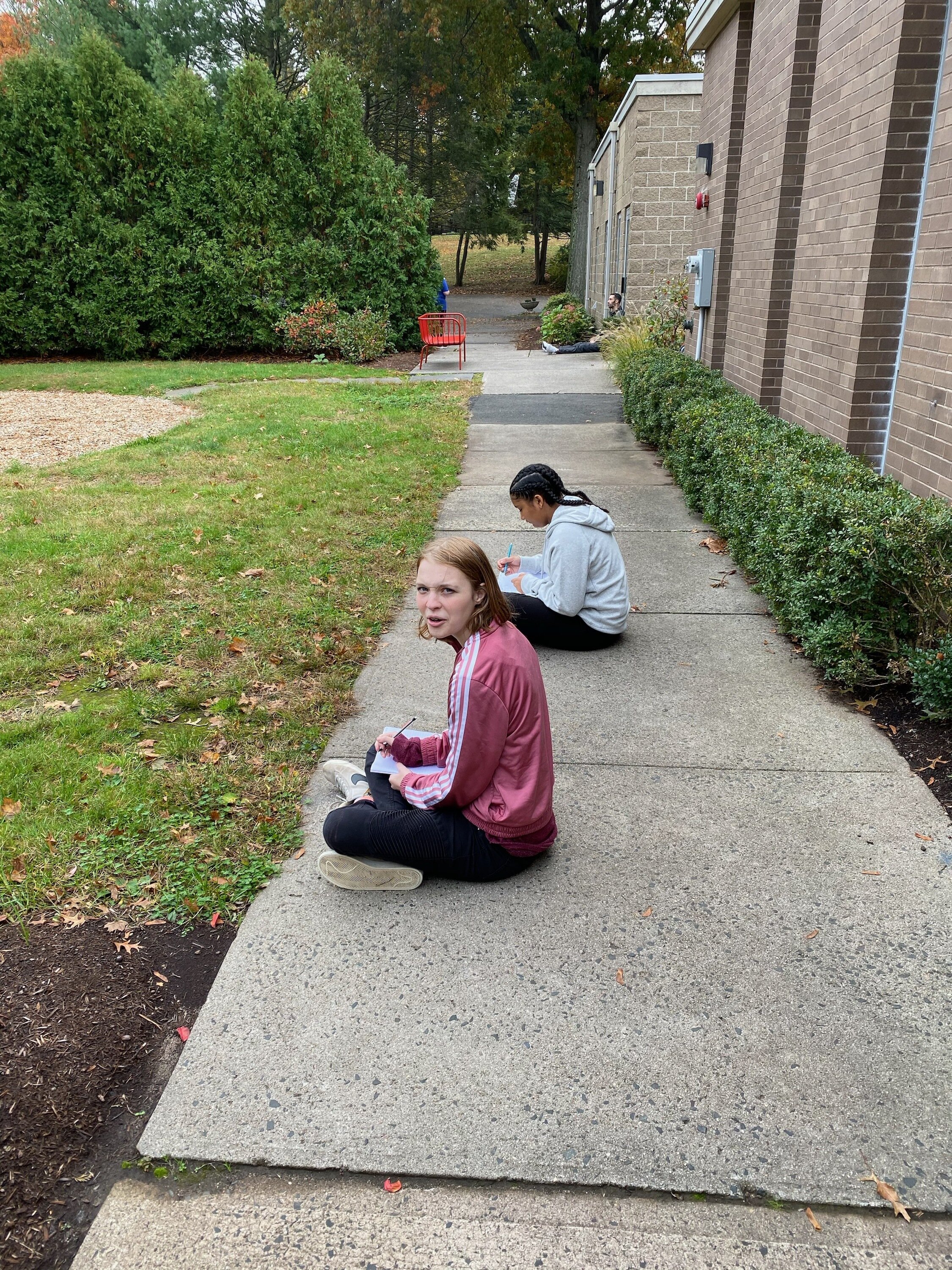
Listen to the trees. Please.
This is what the Lorraine D. Foster Day School believes education should look like. It should be thought-provoking, connected to "big" questions which demand deep thinking and reflection.
We have an obligation as teachers to introduce our students to seminal questions. We need to help children understand the ultimate reality of inter-connectedness! This Ted Talk about forests can help us all to understand the profundity of that reality. If we can genuinely grasp this concept, we can generalize it to everything…every concept and every issue…personal, social and global. It represents the type of “learning” that gives us the opportunity to transform ourselves, our relationships, our communities and our planet. We could solve social problems, create peace and heal our collective souls by simply understanding that every living thing is inextricably connected.
Abigail Disney on Wealth Disparity
It’s not often that we hear individuals of such privilege speak so openly and frankly about issues of inequality in this very personal way. I thought it was worth sharing. It’s smart and it’s brave in many ways. I like to post pieces that reflect diverse or original ideas that can deepen our ability to think about the world. It doesn’t come from a particular political perspective although it inevitably comes from a personal one.
To Restore Civil Society, Start With the Library
Louie Chin
Is the public library obsolete?
A lot of powerful forces in society seem to think so. In recent years, declines in the circulation of bound books in some parts of the country have led prominent critics to argue that libraries are no longer serving their historical function. Countless elected officials insist that in the 21st century — when so many books are digitized, so much public culture exists online and so often people interact virtually — libraries no longer need the support they once commanded.
Libraries are already starved for resources. In some cities, even affluent ones like Atlanta, entire branches are being shut down. In San Jose, Calif., just down the road from Facebook, Google and Apple, the public library budget is so tight that users with overdue fees above $20 aren’t allowed to borrow books or use computers.
But the problem that libraries face today isn’t irrelevance. Indeed, in New York and many other cities, library circulation, program attendance and average hours spent visiting are up. The real problem that libraries face is that so many people are using them, and for such a wide variety of purposes, that library systems and their employees are overwhelmed. According to a 2016 survey conducted by the Pew Research Center, about half of all Americans ages 16 and over used a public library in the past year, and two-thirds say that closing their local branch would have a “major impact on their community.”
Libraries are being disparaged and neglected at precisely the moment when they are most valued and necessary. Why the disconnect? In part it’s because the founding principle of the public library — that all people deserve free, open access to our shared culture and heritage — is out of sync with the market logic that dominates our world. But it’s also because so few influential people understand the expansive role that libraries play in modern communities.
Libraries are an example of what I call “social infrastructure”: the physical spaces and organizations that shape the way people interact. Libraries don’t just provide free access to books and other cultural materials, they also offer things like companionship for older adults, de facto child care for busy parents, language instruction for immigrants and welcoming public spaces for the poor, the homeless and young people.
I recently spent a year doing ethnographic research in libraries in New York City. Again and again, I was reminded how essential libraries are, not only for a neighborhood’s vitality but also for helping to address all manner of personal problems.
For older people, especially widows, widowers and those who live alone, libraries are places for culture and company, through book clubs, movie nights, sewing circles and classes in art, current events and computing. For many, the library is the main place they interact with people from other generations.
For children and teenagers, libraries help instill an ethic of responsibility, to themselves and to their neighbors, by teaching them what it means to borrow and take care of something public, and to return it so others can have it too. For new parents, grandparents and caretakers who feel overwhelmed when watching an infant or a toddler by themselves, libraries are a godsend.
In many neighborhoods, particularly those where young people aren’t hyper-scheduled in formal after-school programs, libraries are highly popular among adolescents and teenagers who want to spend time with other people their age. One reason is that they’re open, accessible and free. Another is that the library staff members welcome them; in many branches, they even assign areas for teenagers to be with one another.
To appreciate why this matters, compare the social space of the library with the social space of commercial establishments like Starbucks or McDonald’s. These are valuable parts of the social infrastructure, but not everyone can afford to frequent them, and not all paying customers are welcome to stay for long.
Older and poor people will often avoid Starbucks altogether, because the fare is too expensive and they feel that they don’t belong. The elderly library patrons I got to know in New York told me that they feel even less welcome in the trendy new coffee shops, bars and restaurants that are so common in the city’s gentrifying neighborhoods. Poor and homeless library patrons don’t even consider entering these places. They know from experience that simply standing outside a high-end eatery can prompt managers to call the police. But you rarely see a police officer in a library.
This is not to say that libraries are always peaceful and serene. During the time I spent doing research, I witnessed a handful of heated disputes, physical altercations and other uncomfortable situations, sometimes involving people who appeared to be mentally ill or under the influence of drugs. But such problems are inevitable in a public institution that’s dedicated to open access, especially when drug clinics, homeless shelters and food banks routinely turn away — and often refer to the library! — those who most need help. What’s remarkable is how rarely these disruptions happen, how civilly they are managed and how quickly a library regains its rhythm afterward.
The openness and diversity that flourish in neighborhood libraries were once a hallmark of urban culture. But that has changed. Though American cities are growing more ethnically, racially and culturally diverse, they too often remain divided and unequal, with some neighborhoods cutting themselves off from difference — sometimes intentionally, sometimes just by dint of rising costs — particularly when it comes to race and social class.
Libraries are the kinds of places where people with different backgrounds, passions and interests can take part in a living democratic culture. They are the kinds of places where the public, private and philanthropic sectors can work together to reach for something higher than the bottom line.
This summer, Forbes magazine published an article arguing that libraries no longer served a purpose and did not deserve public support. The author, an economist, suggested that Amazon replace libraries with its own retail outlets, and claimed that most Americans would prefer a free-market option. The public response — from librarians especially, but also public officials and ordinary citizens — was so overwhelmingly negative that Forbes deleted the article from its website.
We should take heed. Today, as cities and suburbs continue to reinvent themselves, and as cynics claim that government has nothing good to contribute to that process, it’s important that institutions like libraries get the recognition they deserve. It’s worth noting that “liber,” the Latin root of the word “library,” means both “book” and “free.” Libraries stand for and exemplify something that needs defending: the public institutions that — even in an age of atomization, polarization and inequality — serve as the bedrock of civil society.
If we have any chance of rebuilding a better society, social infrastructure like the library is precisely what we need.
Eric Klinenberg (@EricKlinenberg), a professor of sociology and the director of the Institute for Public Knowledge at New York University, is the author of the forthcoming book “Palaces for the People: How Social Infrastructure Can Help Fight Inequality, Polarization, and the Decline of Civic Life,” from which this essay is adapted.
Through most of my adult life, I have been a huge fan of the library system and believe that it is probably the one institution that best reflects the democratic ideals this country was founded on and that we claim to value.
Libraries are free. Libraries are color and gender blind. Libraries do not discriminate in any way. The rules are the same for everyone. All they ask from us is that we get a library card, return the books, and respect each other by being quiet!
And, if we forget to return our book on time or lose it, the penalty is the same: we pay a fine, the same fine regardless of our income bracket!
And now, they have computers and some have language classes and lectures and social groups, and volunteers who read to children…all for free! Not a bad deal and as you can see from the photos, our students will be taking full advantage of what our local library offers.
Dominique
Obama Rejects the Keystone Pipeline! Let's become educated for the sake of our children! Please, please watch "Do the Math".
Teens spend an average of 9 hours a day consuming media! Parents need to assist their children by asserting their responsibility as managers and role models!
Our words and actions matter! Nothing is "neutral"!
Sexuality Education
In response to questions posed by students and to our understanding of the complexities inherent in what is euphemistically called "coming of age", Eric Sumpter will be starting a group to discuss issues related to sexuality. I think this article speaks to the spirit and values that we want to convey. Let us know what you think.
The case for starting sex education in kindergarten BY SASKIA DE MELKER May 27, 2015 at 1:44 PM EDT Facebook Twitter Email Teacher Janneke van den Heuvel leads her 8-year old students in a group discussion during Spring Fever week in Gmail “Who here has been in love?” Anniek Pheifer asks a crowd of Dutch elementary school students. Print the Netherlands. NewsHour photo by Saskia de Melker Favorites More... (293) It’s a Spring morning in Utrecht, and the St. Jan de Doper elementary school gym is decked in Settings... heart-shaped balloons and streamers. Pheifer and Pepijn Gunneweg are hosts of a kids television program in the Netherlands, and they’re performing a song about having a crush. Kids giggle at the question. Hands — little and bigger — shoot up. Welcome to “Spring Fever” week in primary schools across the Netherlands, the week of focused sex ed classes... for 4-year olds. AddThis Privacy  Of course, it’s not just for 4-year-olds. Eight-year-olds learn about self-image and gender stereotypes. 11-year-olds discuss sexual orientation and contraceptive options. But in the Netherlands, the approach, known as “comprehensive sex education,” starts as early as age 4. Kindergarteners attend the opening assembly for Spring Fever week at the St Jan de Doperschool in Utrecht, the Netherlands. NewsHour photo by Saskia de Melker You’ll never hear an explicit reference to sex in a kindergarten class.In fact, the term for what’s being taught here is sexuality education rather than sex education. That’s because the goal is bigger than that, says Ineke van der Vlugt, an expert on youth sexual development for Rutgers WPF, the Dutch sexuality research institute behind the curriculum. It’s about having open, honest conversations about love and relationships. By law, all primary school students in the Netherlands must receive some form of sexuality education. The system allows for flexibility in how it’s taught. But it must address certain core principles — among them, sexual diversity and sexual assertiveness. That means encouraging respect for all sexual preferences and helping students develop skills to protect against sexual coercion, intimidation and abuse. The underlying principle is straightforward: Sexual  development is a normal process that all young people experience, and they have the right to frank, trustworthy information on the subject. “There were societal concerns that sexualization in the media could be having a negative impact on kids,” van der Vlugt said. “We wanted to show that sexuality also has to do with respect, intimacy, and safety.” Beyond risk prevention The Dutch approach to sex ed has garnered international attention, largely because the Netherlands boasts some of the best outcomes when it comes to teen sexual health. On average, teens in the Netherlands do not have sex at an earlier age than those in other European countries or in the United States. Researchers found that among 12 to 25 year olds in the Netherlands, most say they had “wanted and fun” first sexual experiences. By comparison, 66 percent of sexually active American teens surveyed said they wished that they had waited longer to have sex for the first time. When they do have sex, a Rutgers WPF study found that nine out of ten Dutch adolescents used contraceptives the first time, and World Health Organization data shows that Dutch teens are among the top users of the birth control pill. According to the World Bank, the teen pregnancy rate in the Netherlands is one of the lowest in the world, five times lower than the U.S. Rates of HIV infection and sexually transmitted diseases are also low. “We have to help young people navigate all the choices they face and stand up for themselves in all situations, sexual and otherwise,” There are multiple factors that likely contribute to these numbers. Easy access to contraception is one. Condoms, for example, are available in vending machines, and the birth control pill is free for anyone under age 21. But there’s also a growing body of research that specifically credits comprehensive sexuality education. A recent study from Georgetown University shows that starting sex ed in primary school helps avoid unintended pregnancies, maternal deaths, unsafe abortions and STDs. Proponents of the Dutch model argue that their approach extends beyond those risks. Their brand of sex ed reflects a broader emphasis on young people’s rights, responsibility and respect  Courtesy of Rutgers WPF that many public health experts say is the foundation of sexual health. A 2008 United Nations report found that comprehensive sex ed, when taught e!ectively, allows young people to “explore their attitudes and values, and to practice the decision-making and other life skills they will need to be able to make informed choices about their sexual lives.” Students who had completed comprehensive sex education in the Netherlands were also found to be more assertive and better communicators, according to an independent health research agency that conducted a study of the Dutch programs. “We have to help young people navigate all the choices they face and stand up for themselves in all situations, sexual and otherwise,” said Robert van der Gaag, a health promotion o!icial at Central Holland’s regional public health center. ‘Little butterflies in my stomach’  At the St. Jan de Doper school, a group of kindergartners sit in a circle, as their teacher, Marian Jochems, flips through a picture book. The pages contain animals like bears and alligators hugging. “Why are they hugging?” she asks the class. “Because they like each other,” one girl answers. Jochems asks them to think about who they like the most. Several kids say their mom or dad. One girl names her little sister. A few name other children at school. “How does it feel when that person hugs you?” Jochems asks. “I feel warm from the inside,” one boy replies. “It’s like there are little butterflies in my stomach.” Lessons like this are designed to get kids thinking and talking about the kind of intimacy that feels good and the kind that doesn’t. Other early lessons focus on body awareness. For example, students draw boys’ and girls’ bodies, tell stories about friends taking a bath together, and discuss who likes doing that and who doesn’t. By age seven, students are expected to be able to properly name body parts including genitals. They also learn about di!erent types of families, what it means to be a good friend, and that a baby grows in a mother’s womb. “People o"en think we are starting right away to talk about sexual intercourse [with kindergartners],” van der Vlugt says. “Sexuality is so much more than that. It’s also about self image, developing your own identity, gender roles, and it’s about learning to express yourself, your wishes and your boundaries.” That means the kindergartners are also learning how to communicate when they don’t want to be touched. The goal is that by age 11, students are comfortable enough to navigate pointed discussions about reproduction, safe sex, and sexual abuse. CLICK HERE TO READ A LESSON PLAN taught to Dutch kindergarten and first graders. Courtesy of Rutgers WPF Let’s not talk about sex In the United States, sexual education varies widely from state to state. Fewer than half of U.S. states require schools to teach sex ed, according to the Guttmacher Institute, a global nonprofit that researches sexual and reproductive health. Just last month Congress extended the Personal Responsibility Education Program (PREP), which funds comprehensive adolescent sexual health initiatives across the country. At the same time they increased funding for programs that promote sexual abstinence until marriage to $75 million a year. And Deb Hauser, president of Advocates for Youth, a nonprofit dedicated to sexuality education, says that sex ed in the U.S. still overwhelmingly focuses on minimizing the risk of pregnancy and STDs from heterosexual intercourse. And nearly four in 10 millennials report that the sex education they received was not helpful, according to a survey by the Public Religion Research Institute. “We have failed to see that sexual health is far more than simply the prevention of disease or unplanned pregnancy,” says Hauser. That narrow focus, she says, leaves young people with few skills to cope with their feelings and make decisions in sexual encounters. Not everyone agrees. In fact, comprehensive sex ed has yet to take hold in most parts of the country. Utah, for example, requires that abstinence be the dominant message given to students. It bans discussing details of sexual intercourse and advocating for homosexuality, the use of contraceptives or sexual activity outside of marriage. Utah state representative Bill Wright has further tried to restrict sex ed. In 2012, he proposed a bill requiring that abstinence only be taught and that it be an optional subject. It passed but was vetoed by the governor. Sex ed is “not an important part of our curriculum,” Wright said. “ It is just basically something out there that takes away from the character in our schools and takes away from the character of our students.” Utah is far from alone. Half of U.S. states require that abstinence be stressed. “We have created generations of people who are not comfortable with their own sexuality,” says Dr. David Satcher, the former U.S. Surgeon General. That extends to parents and teachers, he says.  In other places, the tide is shi"ing toward an approach closer to that of the Dutch. Two of the largest school districts in the country — Chicago Public Schools and Florida’s Broward County — have recently mandated sex education for elementary school students. Chicago Public Schools requires at least 300 minutes a year of sex education for kindergarten through fourth grade students and twice as much time for fi"h through twel"h graders. In the fall of 2015, schools in Broward County will teach sex education at least once a year in every grade, and the curriculum will include information about topics like body image, sexting and social media. In the Netherlands, schools aim to educate parents too. Parents nights are held to give parents tools to talk to their kids about sex. Public health experts recommend that parents take cues from their kids and make it an ongoing conversation, rather than one awkward, all-encompassing “birds and the bees” talk. For example, they advise, if you walk in on your child masturbating, don’t react shocked; don’t punish or scold them. Have a talk about where it is appropriate for such behavior to occur. Courtesy of Rutgers WP “We talk about [sex] over dinner,” said one father at a Spring Fever Parents Night. Another said he recently answered questions about homosexuality posed by his twin 6-year-olds during bath time. Lessons in love Sabine Hasselaar teaches 11-year-olds. In a recent class, Hasselaar posed a series of hypothetical situations to her students: you’re kissing someone and they start using their tongue which you don’t want. A girl starts dancing close to a guy at a party causing him to get an erection. Your friend is showing o! pornographic photos that make you feel uncomfortable. The class discusses each scenario. “Everyone has the right to set their own limits and no one should ever cross those limits,” Hasselaar says. There is an anonymous ‘Question Box.’ in her class during “Spring Fever” week. Students submit questions that teachers later address in class. “Nothing is taboo,” Hasselaar says. One of her students, for example, wrote: “I think I am lesbian. What should I do?” Hasselaar addressed the issue in class: “It’s not strange for some girls to like other girls more than boys. It’s a feeling that you can’t change, just like being in love. The only di!erence is that it’s with someone that is the same sex as you.” And in fact, most of the questions from her students aren’t about sex at all. “Mostly they are curious about love. I get a lot of questions like, “What do I do if I like someone?” or ‘How do I ask someone to go out with me?’” Questions like these are taken just as seriously as the ones about sex. “Of course we want kids to be safe and to understand the risks involved with sex, but we also want them to know about the positive and fun side of caring for someone and being in a healthy relationship,” van der Vlugt says. That’s why you’ll find teachers discussing the di!erence between liking someone (as a friend) and liking someone. There’s even a lesson on dating during which a teacher talked about how to break up with someone in a decent way: “Please, do not do it via text message,” the teacher said. “In the Netherlands, there’s a strong belief that young people can be in love and in relationships,” A"er elementary school, these students will likely go on to receive lessons from a widely- used curriculum called Long Live Love. “In the U.S., adults tend to view young people as these bundles of exploding hormones. In the Netherlands, there’s a strong belief that young people can be in love and in relationships,” says Amy Schalet, an American sociologist who was raised in the Netherlands and now studies cultural attitudes towards adolescent sexuality, with a focus on these two countries. “If you see love and relationships as the anchor for sex, then it’s much easier to talk about it with a child,” Schalet says. “Even a young one.” 
Vincent Gulisano...
It is with heavy hearts that we announce that Vincent Gulisano died Friday night, January 8 at Hospice in Branford. Although we didn’t have the time to get to know Vincent well, it didn’t take long to learn about his character. When Vincent first came to us offering to teach our students chess, he had already been battling cancer for a long time. Although he was undergoing grueling treatments he wanted his life to continue to have meaning and he wanted to serve others. Chess was just one of his many interests and talents. He inspired us with his passion to integrate chess into the math curriculum. Your children and our staff were fortunate to have Mr. Gulisano introduce them to the program and to benefit from his skill and expertise in the art of chess.
Christine and I had the opportunity to experience his incredible bravery. We knew what personal courage it took just to prepare himself each morning to come and teach your children. We marveled at the strength and self-respect involved in being able to manage his medical issues in a way that made them indiscernible. In fact, when his treatment failed and we announced to the staff that he would be absent for what we hoped would be a short leave, most expressed surprise and remarked that they had forgotten that he was ill.
We will continue to teach and play chess at Lorraine Foster Day School and are grateful for the all too brief time that Vincent spent with us.
Why Weren't We There?
I'M ASHAMED BY U.S. LEADERS' ABSENCE IN PARIS by Jake Tapper
Jake Tapper is anchor of CNN's "The Lead With Jake Tapper" and chief Washington correspondent.
Paris (CNN)"Thank you," said the man. I was standing outside of the offices of Charlie Hebdo covering the aftermath of the terrorist attacks for CNN. He was thanking me just for being here, just for covering the event and its aftermath, what Le Monde referred to as France's September 11. And his appreciation was echoed by French citizen after French citizen.
The rally Sunday for unity drew 1.5 million people in Paris and more than twice that nationwide; it was like nothing I've ever seen or covered. Our nation's oldest ally stood firm. A young Muslim Frenchwoman held a sign saying "Je suis Juif."
Jake Tapper Jake Tapper A man and his son came over to me holding a sign saying "I disapprove of what you say but I will defend to the death your right to say it," beseeching me to share their message with the American people. And world leaders were standing together amidst a procession that included Francois Hollande of France, Angela Merkel of Germany, David Cameron of Great Britain, Mahmoud Abbas of the Palestinian Authority and Benjamin Netanyahu of Israel, along with the leaders of Mali, Jordan and Turkey.
It is no small thing for the king of Jordan, a direct descendent of the Prophet Mohammed, to march in a rally prompted by the murders of people who mocked Islam as well as of innocent Jews -- all of whom were killed by Islamic extremists.
The United States, which considers itself to be the most important nation in the world, was not represented in this march -- arguably one of the most important public demonstrations in Europe in the last generation -- except by U.S. Ambassador Jane Hartley, who may have been a few rows back. I didn't see her. Even Russia sent Foreign Minister Sergey Lavrov.
I say this as an American -- not as a journalist, not as a representative of CNN -- but as an American: I was ashamed.
I certainly understand the security concerns when it comes to sending President Barack Obama, though I can't imagine they're necessarily any greater than sending the lineup of other world leaders, especially in aggregate.
But I find it hard to believe that collectively President Obama, Vice President Joe Biden, Secretary of State John Kerry, Secretary of Defense Chuck Hagel, Treasury Secretary Jack Lew and Attorney General Eric Holder -- who was actually in France that day for a conference on counterterrorism -- just had no time in their schedules on Sunday. Holder had time to do the Sunday shows via satellite but not to show the world that he stood with the people of France?
There was higher-level Obama administration representation on this season's episodes of "The Good Wife" on CBS.
I get that the President visited the French Embassy in Washington and that Secretary of State John Kerry spoke in French, and I certainly understand that the American commitment to security in Europe rivals no other. But with all due respect, those are politicians spending money that they didn't earn and sending troops whom they don't know.
And this is not just a matter of the current occupant of the White House.
I find it hard to believe that Speaker of the House John Boehner and new Senate Majority Leader Mitch McConnell had more worthy pursuits on Sunday than standing side-by-side with our French brothers and sisters as they came together in an inspirational way.
After September 11, the first world leader to visit the United States was France's Jacques Chirac, though the most forceful conversation about France in Congress that I can recall came a few years later during debate over whether to invade Iraq and revolved around renaming pommes frites in the U.S. House cafeteria.
And I'm frankly floored that not one of the people who is contemplating running for president in 2016 has yet to even tweet on the subject of the momentous demonstration in Paris, much less attend France's biggest rally in the history of the republic.
I imagine that Hillary Clinton and her husband are kicking themselves for not hopping on a corporate jet to get here. Can you picture Hillary and Bill walking in the front row, arm-in-arm with Netanyahu and Hollande?
Chris Christie, Scott Walker and Paul Ryan attended the Green Bay-Dallas football game Sunday and at least one of them sent his potential rivals mischievous tweets as if they were contemplating running for president of Beta Theta Pi.
And Jeb? Mitt? Crickets.
Why? I hope it's not American arrogance, a belief that everyone should express shock when something bad happens to us but that our presence at an international rally is worth less than a ticket to the Green Bay game when the victims speak in accents we don't understand.
I suppose there's always the risk that coming to an event like this as an American leader and getting stuck in the third row could be embarrassing or could lead to accusations that you're trying to capitalize on a tragedy.
But that's not how it would have been interpreted in France.
People here are happy that Americans care. They're eager and appreciative of any evidence of that. And I know it exists -- although American Twitter seemed much more focused on the Golden Globes than anything else Sunday night.
I only wish our leaders had done a better job of showing solidarity with the passion for the freedoms exemplified by the rally.
Julie Hunt comes through again by directing me to this video. Watch it...it's a great one!
Lorraine D. Foster Day School is proud to be working with the David Lynch Foundation to bring meditation practice to our students.
Amidst Chaos, 15 Minutes of Quiet Time Helps Focus Students
Students at Visitacion Valley School in San Francisco observe 15 minutes of quiet time every morning.
By Kyle Palmer
On a recent morning at Visitacion Valley Middle School in San Francisco, Principal James Dierke looked out over the school’s auditorium at more than 100 eighth graders. A restless din filled the large room. Bursts of laughter and errant shouts punctuated the buzz. Most of the students seemed disinterested in Dierke’s announcements about the spring’s impending graduation, upcoming field trips, and recent birthdays.
Then, Dierke struck a bell and said, “Okay, it’s quiet time.”
And just like that, a hush fell over the auditorium. Students straightened their backs and closed their eyes. Some bowed their heads. Others rested them on the backs of their chairs. The once-boisterous hall became silent and remained so for the next 15 minutes.
“Visitors are always amazed,” Dierke said afterwards, “but it works. It really is quiet time.”
“Meditation strengthens the areas of the brain that control our ‘fear center.’ It helps kids reduce anxiety and increase their ability to reason and concentrate.” “Quiet Time” isn’t just a slogan but a daily regimen at Visitacion Valley. The entire school—faculty, staff, and students—spend the first and last 15 minutes of every day in silence. Students are encouraged to use the time to meditate, but Dierke says students can simply clear their mind, think about schoolwork, or even sleep. Just as long as they are quiet.
“I’ve found that it makes people—students and teachers—more joyful,” Dierke said, “To have that time to reflect and be still is important.”
That is not always possible for his school’s students, Dierke said. He said the neighborhood around Visitacion Valley can be rife with violence and crime. “These kids hear gunshots on their way to and from school. That kind of stuff makes it hard to focus on algebra,” he said.
Besides dealing with problems outside school, Visitacion Valley faces challenges in school, too. Nearly 90 percent of Visitacion Valley’s students are classified by the district as socioeconomically disadvantaged and more than 40 percent are English Language Learners.
Dierke, who has been principal at the school for 13 years, said things reached a turning point about five years ago. “We were looking for a way to get kids to relax,” he said. “We saw kids with real post-traumatic stress disorder symptoms. I noticed a lot of them missing school, fighting, and getting angry a lot. They couldn’t concentrate on school.”
An assistant principal suggested the idea for quiet time after she saw Hollywood director David Lynch speak about the program and the accompanying benefits of transcendental meditation. Lynch runs a non-profit foundation that promotes meditation in schools and also sponsors meditation retreats for under-served students.
With the help of the David Lynch Foundation and the San Francisco-based Center for Wellness and Achievement in Education (CWAE), Visitacion Valley trained teachers on how to conduct Quiet Time sessions in their class. CWAE specialists counseled students on meditation techniques and five full-time staffers remain on campus to help maintain the program.
Since beginning Quiet Time, Dierke said things have improved: Daily attendance last year was more than 98 percent, and there have been fewer suspensions and higher test scores.
Angelica Mahinay, Visitacion Valley’s 8th grade student body president, said Quiet Time gives her more energy. “I get to school at 7 a.m. for softball practice. It helps me not be so tired during school,” she said.
Eighth grader Art Parkeenvincha moved to San Francisco from Canada in the middle of this year. “I can be really hyperactive,” he said. “I had never done meditation before, but now I do Quiet Time. I think of my mantra, and it helps me calm down.”
“Man, when I hear students getting an attitude, or they’re saying they’re going to fight, I say, ‘Hey! Just meditate!’” Bob Roth, Executive Director for the David Lynch Foundation, said meditation is not just a way for students to relax but has real cognitive benefits. “Meditation strengthens the areas of the brain that control our ‘fear center’,” he said. “It helps kids reduce anxiety and increase their ability to reason and concentrate.”
Principal Dierke said, as a result of Quiet Time, the school’s image is changing. “This school used to be known as the ‘fight’ school,” he said. “Now, I have other principals asking me about Quiet Time. It feels good to have that reputation.”
Two other schools in SFUSD have begun their own Quiet Time programs and a district spokesperson said other schools have begun asking questions about Visitacion Valley’s success.
Visitacion Valley also got attention from actor Russell Brand, who visited the school just before Christmas on a trip sponsored by the David Lynch Foundation. “That was crazy,” Angelica, the student body president, said. “I got to sit right by him and the whole school meditated with him.”
In addition, Dierke said regular Quiet Time has also helped teachers relax. “Only two teachers have left in the past five years, outside of retirements and district layoffs. That’s amazing for an urban middle school,” he said. He attributes that to higher levels of job satisfaction.
Physical Education teacher Barry O’Driscoll agreed that Quiet Time has helped improve the staff’s quality of life. “I was very reluctant when it first started,” he said. “I thought it was just another fad. But now I meditate twice a day, and I do it at home. I think it’s helped my golf game, too.”
Visitacion Valley still struggles with significant challenges. This year, the school has had to integrate more than 100 new students onto campus after another nearby middle school was closed by the district. Likewise, test scores have increased in recent years but still remain low compared to other SFUSD middle schools.
“We’re not perfect,” Dierke said. “Quiet Time is just like an umbrella. When you have it up, it keeps the rain off, and you can focus on trying to build a culture with kids. That’s what we’re gradually doing here.”
The payoff might be most evident in students like Angelica Mahinay, who says, “Man, when I hear students getting an attitude, or they’re saying they’re going to fight, I say, ‘Hey! Just meditate!’”
[CLARIFICATION: Visitacion Valley Middle School is located in San Francisco, not South San Francisco, as the article originally stated.]
Who deserves the failing grade?
Some of you have become familiar with my impassioned beliefs regarding the state of American education. I want to share this article because it addresses many of these issues from the perspective of one country that appears to be receiving A+s. I hope that you will note that Lorraine Foster Day School’s philosophy and curriculum reflected these ideas long before it was politically correct to do so.
Editor's note: Pasi Sahlberg is visiting professor at Harvard University's Graduate School of Education and former director general in the Finnish Ministry of Education and Culture. Follow him on Twitter: @pasi_sahlberg. The opinions expressed in this commentary are solely those of the writer.
(CNN) -- Millions of American parents spend countless hours trying to figure out how to help their children get better grades, better teachers or better schools. They may want to take a page from Finland, which is considered to have one of the leading education systems in the world. Finnish students consistently score near the top in the Program for International Student Assessment, or PISA, for reading, mathematics and science. The 2012 PISA results tell us that in these three subjects combined Finland ranks third after Korea and Japan. In comparison, American students' combined performance in reading, mathematics and science places the United States at 21st among 34 Organization for Economic Co-operation and Development countries. For some, education in Finland is utopia: a dreamland where teaching is the most desired profession, authorities trust schools and political parties agree on the direction of educational reforms. Pasi Sahlberg Pasi Sahlberg For others, they are surprised to hear that in Finland children don't start school until they are 7 years old. They have less homework than their peers in other countries. A child's socioeconomic background is less of an impediment to academic performance. And there is only one standardized test, which is administered in the final year of high school. What are the main factors that prevent American students from achieving the kind of success that Finnish students attain? There are three things that have positively affected the quality of Finnish schools that are absent in American schools. First, Finland has built a school system that has over time strengthened educational equity. This means early childhood education for all children, funding all schools so they can better serve those with special educational needs, access to health and well-being services for all children in all schools, and a national curriculum that insists that schools focus on the whole child rather than narrow academic achievement. Opinion: Should schools ban homework? Spurlock visits Finnish classroom Second, teachers in Finland have time to work together with their colleagues during the school day. According to the most recent data provided by the OECD the average teaching load of junior high school teachers in Finland is about half what it is in the United States. That enables teachers to build professional networks, share ideas and best practices. This is an important condition to enhancing teaching quality. Finally, play constitutes a significant part of individual growth and learning in Finnish schools. Every class must be followed by a 15-minute recess break so children can spend time outside on their own activities. Schooldays are also shorter in Finland than in the United States, and primary schools keep the homework load to a minimum so students have time for their own hobbies and friends when school is over.
The difference is pronounced in America, where a national poll of elementary school principals found that up to 40% of U.S. school districts have reduced or eliminated recess in order to free more time for core academics, and one in four elementary schools no longer provides recess to all grades. I hear people often arguing that because the United States is much bigger, more diverse, and more unequal, it's harder to reach higher quality education. But even if this were true, it would not explain why in Finland students learn better in their schools than in most other places in the world. Opinion: Let kids sleep late Some aspects of the American school system are not helpful in improving education quality and equity. First, education in the United States is too much defined by testing and data. If getting the data using frequent standardized tests occupies up to one-third of all available time to teach, that will alone prevent students from making the marks they should. Second, American education places too much faith in marketplace choice, which parents have because of expanded access to charter schools. This weakens the public school structure that is fundamental to many successful education systems elsewhere. Finally, more students in America have novice or nonprofessional teachers in their classrooms today than ever. Frequent turnover of teachers in thousands of American schools undermines the entire education system. What would be the way forward then? The United States can't become Finland, but there is a lot it can learn about what works and what doesn't. One affordable and smart step would be to terminate policies and practices that prevent American teachers from teaching what matters most to their students. Redesigning current punitive accountability for schools and abolishing unnecessary standardized tests would remove a big burden from schools and leave teachers with more time to focus on real learning. Opinion: Get schools out of the 1890s The ultimate test for the American education system will be whether it can bring equity to the forefront of education policies. When poverty explains up to half of student achievement, schools must have measures to better cope with the harmful consequences that disadvantaged family backgrounds have on teaching and learning in many schools. Enhancing equity has been one key to success in Finland.
Don't read this post while your children are trying to talk to you!
Julie Hunt, classroom teacher, emailed me this article last night after an animated conversation at our staff meeting regarding the effects of technology on our children. I think it's worth a read.
Comment: Parenting while distracted
By
Jane Scott
Source:
The Washington Post
11 Aug 2014 - 8:49 AM UPDATED 11 Aug 2014 - 11:11 AM
I've been a pediatrician for 20 years, and I thought I'd seen it all. But not long ago, when a father brought his 2-year-old into my clinic, something happened that has me deeply concerned.
Upon entering my examining room, I found father and son sitting together, eyes downcast, each silently scrolling and tapping on smartphones. During my initial exam, the father directed most of my questions to his frowning toddler, who indicated that his ears hurt, and I quickly discovered that both eardrums were red and inflamed.
"Guess what?" I said to my small patient. "Your ears hurt because you have an ear infection. But we can give you medicine and make you better." I smiled at the little boy and his father. Immediately, the child picked up his phone and pushed a button. "Siri," he asked carefully. "What ear 'fection?"
At age 2, a few minutes on a smartphone isn't a big deal; screen time is a part of growing up today, and most parents try to set appropriate limits. But when a child so young turned to a machine for information instead of to his father, it made me wonder: Just how limited was his parents' screen time? What I saw was modeled behavior — a child who has learned that when he has a question, Siri, and not Dad, is most readily available with an answer.
It's hard to say for sure based on this one moment, but there can be no doubt about the larger trend: Parents today are probably the most informed and involved generation in history. And, yet, in the company of their children, they often act as though they'd rather be someplace else. That's what they're saying when they break eye contact to glance at their push notifications or check Facebook when they think their child's distracted. The parents are present, their attention is not.
In my practice, I see evidence every day of how such inattention affects kids. It's expressed in temper tantrums and separation anxiety, and older children who resist discipline. Most parents are taught that this is all normal, that children are biologically wired this way. Not exactly. Yes, all of this is normal attention-getting behavior, but it often is preventable.
Consider the results of a March study by researchers from Boston Medical Center who carefully observed caregivers and children at fast-food restaurants. Out of 55 caregivers, 40 used their mobile devices, and their absorption was such that their "primary engagement was with the device, rather than the child." In many cases, the caregivers expressed irritation when the children tried to get their attention. One observer watched a woman push a small boy away as he took her face in his hands in an attempt to get her to look up from her tablet.
It's possible all those adults were following an urgent work email thread. More likely, they were on Facebook, Twitter or Pinterest. A 2011 Nielsen poll found that people with children use social media more than those without. Maybe these adults were reading an article shared by another parent. Maybe they were making plans with friends and family. But they were definitely communicating to their children that they were less important than whatever was on those devices.
This might seem absurd to today's parents, who feel like they give themselves to their children in ways previous generations never imagined. But the undivided attention that children need from us is in jeopardy. Most people just don't realize how much time they're spending online; what feels like a few minutes is often a half hour or more. When we are with our children, we need to be with our children — not with them except for the part of us that's reading emails, tweeting and checking Facebook.
Another reason for parents to put down their phones: Though Facebook may provide community, it can also promote competition and unreachable standards of perfection. Through Facebook, we read an endless litany of our friends' boasts about their children. It's enough to make a person wonder what she's doing wrong because her child prefers plain pasta over the curry special or "Old MacDonald" to Chopin. Though most parents would say they're not competitive in this way, many worry privately that they might be short-changing their kids.
Social media has a place and a purpose, but too many parents are creating unnecessary stress by trying to be in two places at once, while modeling to their children that online relationships take precedence over real ones. In an era of constant distraction, we must decide what's more important: heeding the constant ping of our devices or telling our children, in word and deed, "I am listening. I am here. And there's nowhere else I'd rather be."
In Honor of the Climate Change March in NYC
Protect the wild, tomorrow's child; Protect the land from the greed of man. Take down the dams, stand up to oil; Protect the plants, and renew the soil.
Who's gonna stand up and save the earth? Who's gonna say that she's had enough? Who's gonna take on the big machine? Who's gonna stand up and save the earth? This all starts with you and me.
Damn the dams, save the rivers; Starve the takers and feed the givers. Build a dream, save the world; We're the people known as earth.
Who's gonna stand up and save the earth? Who's gonna say that she's had enough? Who's gonna take on the big machine? Who's gonna stand up and save the earth? This all starts with you and me.
Ban fossil fuel, draw the line; Before we build, one more pipeline. Ban fracking now, save the waters; And build a life, for our sons and daughters.
Who's gonna stand up and save the earth? Who's gonna say that she's had enough? Who's gonna take on the big machine? Who's gonna stand up and save the earth? This all starts with you and me.
Who's gonna stand up? Who's gonna stand up? Who's gonna stand up? Who's gonna stand up? Who's gonna stand up?
Welcome Back!
Dear Families,
As we end our first full week of school, Christine and I would like to share a few of our impressions regarding the start of school year 2014/2015.
It has been a positive week and exhilarating in many ways. We will be introducing new courses and activities this year and have begun to experiment with some. You may have heard from your child that all students (and teachers!) meet together in the gym to start their school day with a 15-minute “active activity” led by Eric Sumpter, our Physical Education Teacher. Research is clear (and growing) regarding the connection between physical activity and learning–and, we don’t need to scour the academic literature to know that interacting actively with others in the spirit of cooperation is just plain fun! Students who do not choose to join in the group activity may elect to take a supervised walk instead. Before returning to class, each student is provided with water and a snack (choices to date have included plums, pears, bananas, yoghurt and KIND health bars).
Here’s what they have to say: “exercise gets your mind going and ready for the day…I really liked the Pac Man activity…it’s good to get exercise to get the body moving and I’m trying to lose weight…I think it’s awesome–you get fresh air, notice things that you would not be able to notice if you were in the classroom…I think the staff have great ideas for activities…it’s the greatest thing to happen since the dawn of time! I like the pears…it’s cool…it helps you stay healthy.”
We look forward to offering a weekly chess class as part of each student’s math curriculum– Mr. G is a retired teacher with 11 years teaching experience in mathematics, computer science and physics. Meghan will return to teach a weekly yoga class. Don Culp will be back to lead our drumming circle and inspire us with his musicianship and wisdom. Mr. B. will return to dazzle us with his math wizardry. Ms. Alice has joined the staff as our art and pottery teacher and brings years of experience as a public school art teacher and respected potter teaching at Creative Arts Workshop, Guilford Art Center and Wesleyan Potters.
We will start language instruction in the coming weeks.
Your children are a blessing to all of us, thank you for entrusting them to our care.
Dominique
One Student's Imaginative Creations
Justin's "creatures of the Planet Charaxes (pronounced char-axis)"
I love our students' flights of fancy. There is so much talent here!


















